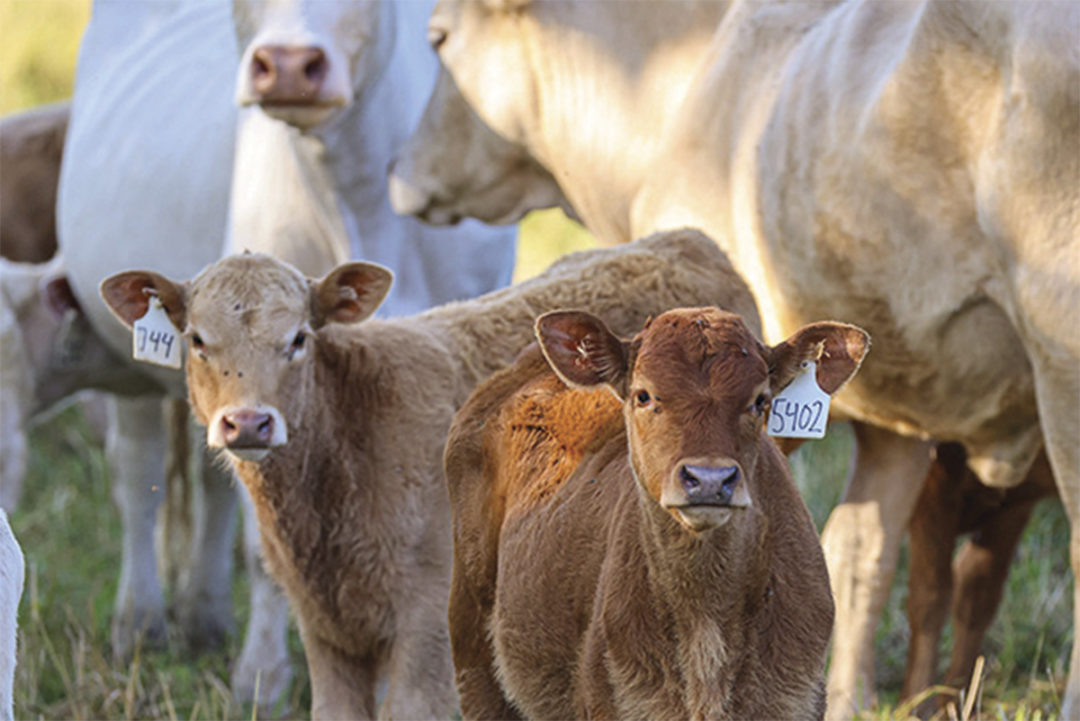Rain has abandoned us during a vital forage-growing period. In tall fescue pastures, two-thirds of forage growth comes in the spring, and one-third grows in the fall. Without rain in the near future, it is unlikely that tall fescue pastures in the afflicted areas will produce an average amount of forage this fall because we are running short on rain and out of growing days. Here are a few cattle management options for underperforming fall pastures.
Strategic destocking
One way to manage drought is to sell cows. Recently, the cull cow market has been strong, but that is not guaranteed to continue. Careful thought must be given to which grass-eaters go first. The first cut is simple. Sell any cow that is not pregnant or nursing a calf. There is no feed for freeloaders when forage is short. Next, cull lactating cows with bad disposition, bad eyes, bad feet or bad udders. Now is the time to be rid of cows with blemishes or poor-doing calves. Everyone has a cull list. Act on it!
Another destocking tool is to wean spring-born calves. Making milk increases cow feed requirements substantially. This is not the year to brag about exceptional weaning weights. Wean calves now, and pasture stocking will decrease by up to 40%. When we leave calves on cows too long, cow body condition score will decline. Quite frankly, it is cheaper to put 100 pounds of gain (1 cow body condition score) on a 400- to 500-pound calf than on a 1,300-pound cow. The University of Missouri Extension would be glad to help balance a calf ration to make up the reduced weaning weight.
Fall calving herds have a different challenge. Weaning calves that are less than 60 days old is not a viable option. Cow nutrient requirements peak 60 days post-calving. Anything less than premium grass hay will not meet nutrient requirements during this period. We do not want cows going into the breeding season losing weight. That will delay pregnancy. Invest dollars in feed for this group of cows. Rather than buying hay, invest those dollars in soyhulls, corn, distillers grains or other concentrate feeds that have more nutrients than fescue hay.
A short breeding season is an excellent destocking tool this year if pastures are not short yet. Running a 45- to 60-day breeding season, then culling any open females serves two purposes. It identifies the highly productive cows, and it reduces stocking rate. This may be a year to invest in reproductive technologies, like artificial insemination, even in mature cows.
Stretching short hay supply
I learned lessons during the 2018 drought. One difference between these two dry periods is hay availability. A dry fall 2017 required hay feeding to begin early that year. Then, we had a long winter and some were feeding hay into early April, followed by a dry May and June. Part of our drought issue was that we had fed all the hay in the area up by June 1, 2018. Now is not the time to recklessly use up hay reserves. Try to limit hay waste and even limit feed hay to stretch your stored forage supply.
Minimize hay waste by any means possible. My recommendation is to feed one day’s worth of hay at a time to the livestock. Unroll bales to allow simultaneous access to feed and limit hay allowance to 1% of cow bodyweight per day, even if the quality is poor. Another option to limit hay intake is to restrict the time cattle have access to hay. Cattle with as little as four hours access to hay and a supplement can be quite productive. Make sure that there are enough “seats at the table” for every cow to eat. I recommend a bale for every eight mature cows. Aggressive cows will fight off others from the hay ring when time at the hay feeder is limited.
Pair restricted hay access with a 50-50 mix of grain and byproduct fed at a rate between 0.5% (pregnant) and 1% (lactating) of bodyweight per day, and nutrient requirements should be met. There is not a need to get fancy in balancing the diet to all limiting nutrients. Make sure caloric and protein intake are adequate and worry about the rest later.
Situations like this make hay testing important, especially if you are unfamiliar with the hay purchased. The worst-case scenario is overpaying for hay that has no chance of meeting nutrient requirements. When hay producers put a singular focus on quantity to meet demand, quality (nutrient content) frequently suffers. Very poor-quality forage is likely deficient in energy and possibly deficient in protein, depending on if cattle are growing, lactating or pregnant. When crude protein (CP) is below 7%, cows will need 0.5-1 pound of crude protein per day. Two to 3 pounds of distillers grains (30% CP) will correct the deficiency, along with a host of other high-protein feeds.
Comparing costs of feedstuffs
Hay is the closest analog to pasture forage, yet it can be a wasteful feedstuff that is not nutrient dense. A wise approach to cost-effectively feeding through a drought is to compare feeds on a “dollars per pound of total digestible nutrients (TDN)” basis (example: 50% TDN hay that costs 5 cents per pound or $100 per ton). It is worth 10 cents per pound of TDN. Make a comparison across several feeds, and a “best deal” in your area can be easily identified. Nutritionists use TDN as a proxy for energy content. The average cow in the second trimester of gestation requires approximately 13 pounds of TDN per day. A cow nursing a 60-day-old calf will require 20 pounds of TDN per day.
Final thoughts
This article is not intended to be a comprehensive review of the technical aspects of meeting a beef cow’s feed requirements during times of shortage. The goal is to strongly encourage producers to evaluate their situation and take action before cows lose significant nutrient reserves. Feeding through a drought is a great way to drain cash reserves in beef cattle operations but is a widespread drought management practice. Energy (calories) is the most limiting nutrient in cow diets during drought. Identifying the least cost feed per unit of nutrient needed (dollars per pound of TDN) is another highly recommended strategy. Before utilizing unfamiliar feedstuffs, be sure to check in with your local extension office for guidance on proper use. The cost-effective solution to the lack of feed resources is out there if a producer is willing to be creative and ask for help.









